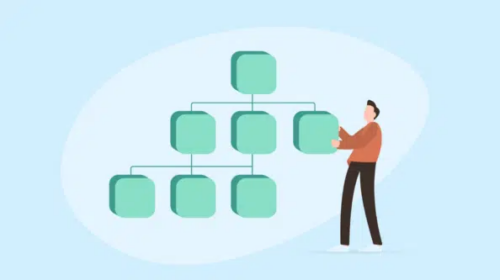When AMP and other Google initiatives go to the grave, are your SEO efforts going with it? [Video]
Before adopting, SEOs need to consider how long a new feature may be around for, the cost of implementation and maintenance, and whether increased visibility leads to increased revenue.
Google’s accelerated mobile pages (AMP) framework has been the gatekeeper to its Top Stories carousel, a search result feature that provides increased visibility for publishers whose content appears in it. Now that the company has announced plans to lift the AMP restriction on Top Stories, the framework’s future is in question, with some SEOs pointing out that Google has a history of introducing new attributes and features only to abandon them a few years later.
“If AMP does go away, it’s going to be more difficult in the future when Google decides to do some kind of experiment to really get buy-in from everybody,” Matt Dorville, SEO manager at BuzzFeed, said during our AMP session of Live with Search Engine Land, adding that “[Google] will just use traffic as a way of getting people to all do it, and we have to do it then.”
Another one bites the dust? If publishers move away from AMP in favor of optimizing their mobile sites for Google’s page experience signals, the framework is likely to join the rel=prev/next and Authorship attributes as just another thing Google introduced but stopped supporting, at least in the mind’s of publishers that dedicated resources to implementing and maintaining these products.
A cynical future for new Google products. “It was very difficult for me to get AMP started because it’s hard to go up to a development group and say, ‘Hey look, Google has this new thing’,” Dorville said. For publishers, the introduction of a new Google product creates a situation in which it may improve its SEO after committing resources to adoption and maintenance, but Google will certainly benefit by bolstering its own user experience.
If Google eventually stops supporting these offerings, site owners will no longer have the visibility advantages that they once came with, but the resources and labor hours will have been spent.
Do we really have a choice? When the potential payout is increased visibility, and competitors are hopping on board with Google’s latest product, it may seem like publishers don’t have a say in their own SEO strategies.
“Publishers do have a choice, however it comes at great expense and they need to be able to accept the repercussions,” Vinny Green, COO at Snopes.com, told Search Engine Land, noting that “If there is no choice, then publishers are the victim and we should be focused on the culprit.”
Green also pointed out that the top web publishers are in a stronger position to advocate for the industry at large, instead of reaping the benefits of their position and adopting programs from platforms like Facebook or Google simply because they have the resources to do so.
It was good while it lasted, right? “They’re good for Google’s users,” Green said when asked about the benefits of Google’s now-defunct initiatives, “And, if you’re lucky, those users might visit your site and one day become your users . . . Incidental gains in traffic because of features that benefit Google is not something you can take to the bank.”
“Most of what Google releases, even if it is new and doesn’t last forever, does last for a few years,” said Search Engine Land’s Barry Schwartz, who has been cataloging search feature updates and sunsets for nearly two decades, “You can capitalize on those features for at least a few years.”
“For three years, those who implemented Authorship had a nice size graphic of the author’s photo next to the search results snippet,” he mentioned as an example, “That increased the article’s click through rate from search for three years.”
“While I wouldn’t implement everything Google releases, you have to see how it impacts your clicks from search and how it impacts your users and make a decision. That decision should be made based on assuming the feature will be around for a few years but not last forever,” he said.
Why we care. Many businesses operate on fewer resources and less staff than they’d like, especially during times of economic hardship, such as the coronavirus pandemic. When Google introduces a new offering, rushing to adopt it can tax already thin resources and maintaining it will become a long-term cost. On the other hand, Google does have the power to increase visibility in the search results for those who do implement their initiatives.
When rich results first launched, many did not think they’d be here today, but now it seems highly unlikely that Google will ever end support for structured data. Whether or not to implement should come down to what site owners are able to achieve with their increased visibility, the cost of adoption and maintenance, and how much and how long their business is likely to benefit from implementing.





